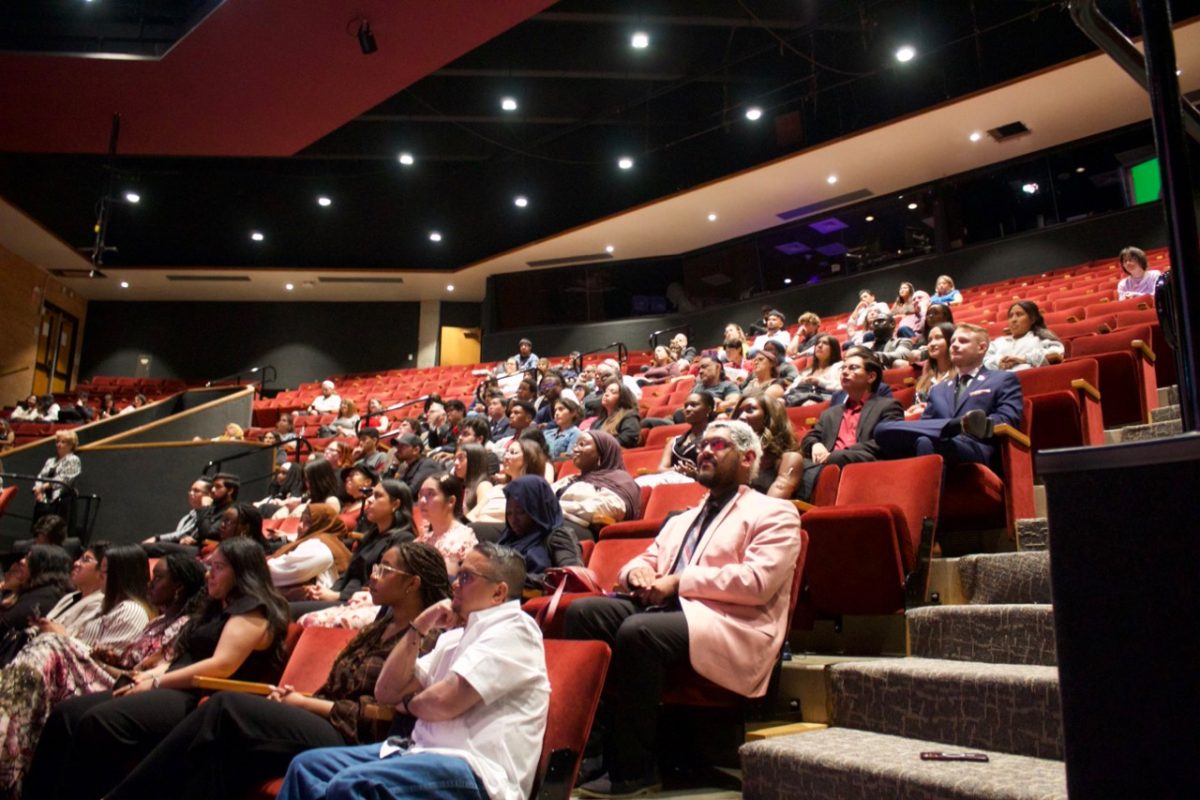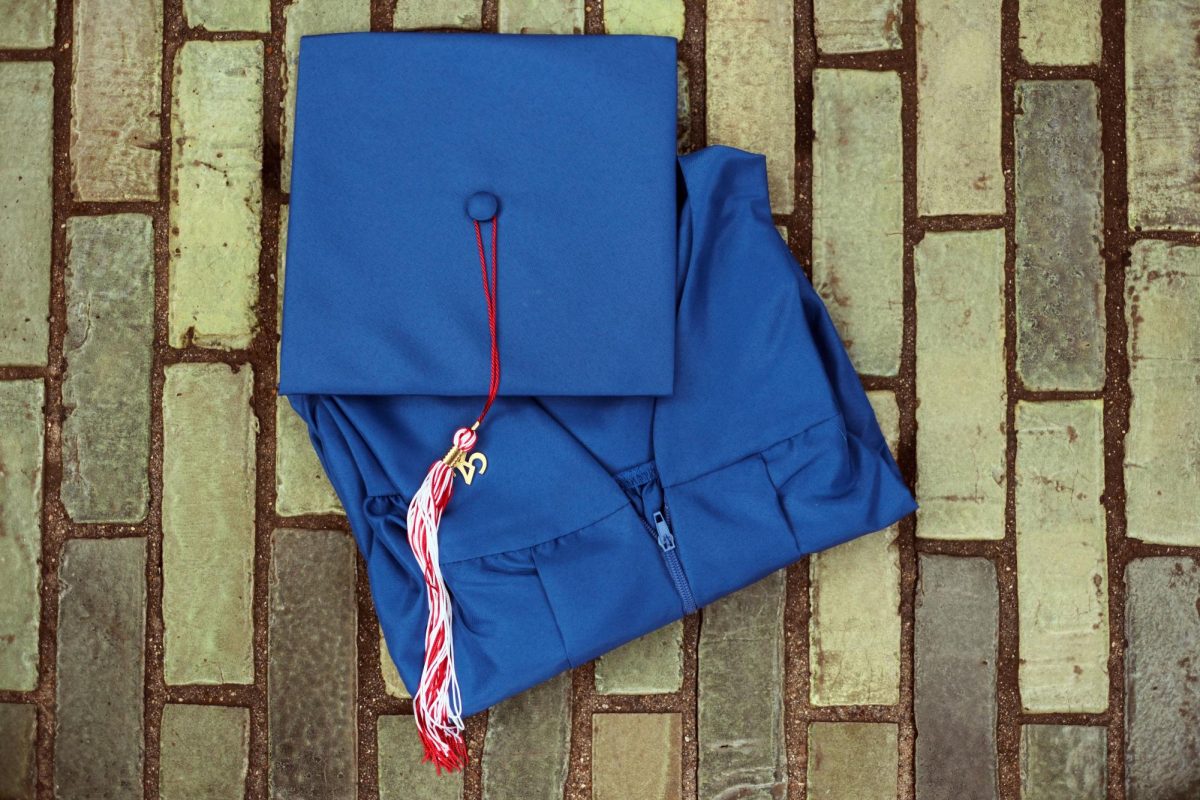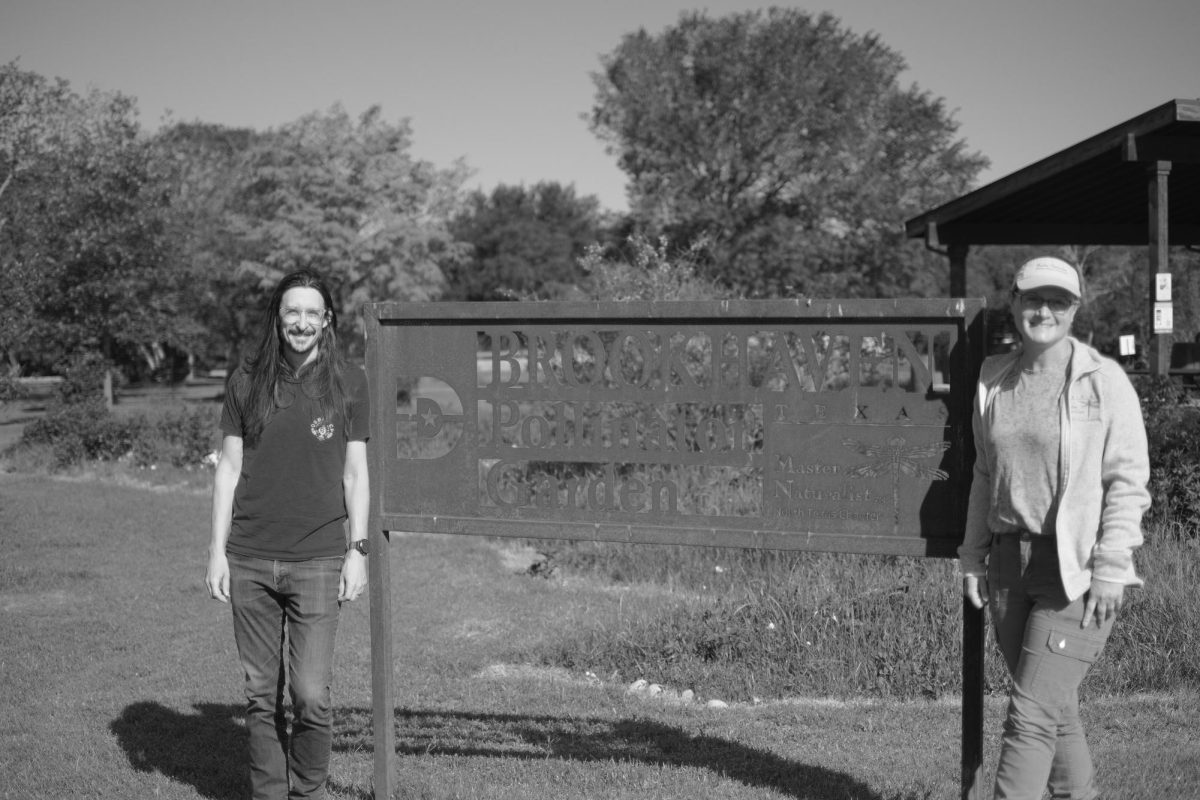Brookhaveans witness super blue blood moon.
By Morgan Hanson
Opinions Editor
The setting moon passed fully into Earth’s shadow, fading in the sky and taking on a red hue as Pink Floyd’s “Dark Side of the Moon” played in the background at 6:51 a.m. “We have strong twilight,” Chaz Hafey, Brookhaven College astronomy and physics lab coordinator, said.
“Ladies and gentlemen, welcome to Brookhaven College and the super blue blood moon,” Hafey said over the sound of music. Crowds huddled around telescopes during the brisk morning Jan. 31 to observe the celestial phenomenon.
The lunar viewing event was open to the public and attracted attention from Brookhaven astronomy students and local amateur stargazers, who came to marvel at the astronomical event.
A super blue blood moon is three coinciding lunar events, according to NASA. A super moon occurs when the moon is closest to the Earth in its orbit, making it appear larger in the sky. A blue moon is a second full moon in a calendar month. According to CNN, a blood moon occurs during a lunar eclipse when sunlight passed around the edges of the Earth, giving the moon a reddish, cooler color. A total lunar eclipse occurs when the moon is totally within Earth’s shadow, according to NASA. All three events have not coincided since 1866, according to space.com.
Chris Cason, adjunct math faculty, said, “Chaz is the main guy in charge, he gets the equipment together, he gets all the papers for what we need to do out here and he tells me what to do,” in between adjusting various telescopes and helping students with calculations.
“We read about it in [The Dallas Morning News], so we thought we’d come over,” Garrett Smith, Farmers Branch resident, said, standing next to his wife, Faith Smith. He said they had witnessed the solar eclipse in August 2017, which raised their interest in astronomical viewing.
“Last year I did almost 100 hours of public [astronomical] observing,” Dennis Wardell, a member of the Texas Astronomical Society of Dallas, said.
Throughout the morning, people were lined up to look through his 10-inch Meade LX90 telescope aimed at the eclipse. He said many of the organization’s activities are open to non-members.
“We have four star-parties per month, open to the public,” Wardell said, “The only thing that’s really members-only is our observing site up in Oklahoma.”






